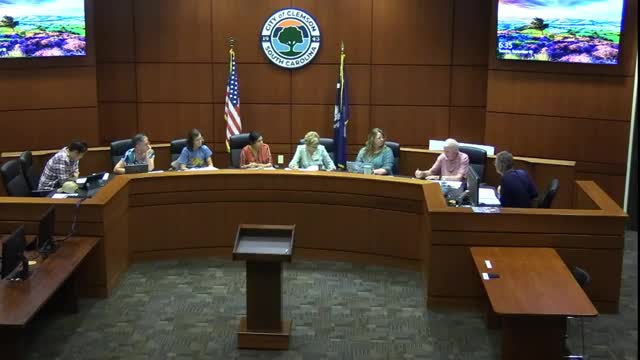Community demands stronger tree protection amid rapid development
September 10, 2024 | Clemson, Pickens, South Carolina
This article was created by AI summarizing key points discussed. AI makes mistakes, so for full details and context, please refer to the video of the full meeting. Please report any errors so we can fix them. Report an error »

During a recent government meeting, discussions centered on the need for enhanced tree preservation regulations amid ongoing development in the area. Participants expressed concerns about current ordinances that allow for significant tree removal during construction, often resulting in the clear-cutting of healthy trees with minimal penalties for developers.
One committee member highlighted the importance of establishing a liaison with the University Sustainability Committee to foster collaboration and revive their initiatives, which have reportedly stalled. This connection could potentially lead to more robust environmental practices within local development projects.
The conversation shifted to the inadequacies of existing tree ordinances, which primarily apply to city property and offer limited protection for trees on private land. Concerns were raised about developers being able to pay a nominal fee to remove large trees, which does not sufficiently incentivize the preservation of the natural landscape. Suggestions included increasing financial penalties for tree removal and requiring developers to replace removed trees with larger, more ecologically beneficial species.
Participants also discussed the necessity of maintaining vegetative buffers during construction to protect wildlife habitats and enhance community aesthetics. One resident shared personal experiences of losing natural barriers due to nearby development, emphasizing the need for regulations that ensure some trees remain intact to provide privacy and support local wildlife.
The committee agreed to explore the current tree ordinances and consider proposing revisions to the planning commission. They recognized the complexity of the regulations and the need for expert guidance to navigate the existing codes effectively. The meeting concluded with a commitment to further investigate tree preservation strategies and engage with relevant stakeholders to promote sustainable development practices in the community.
One committee member highlighted the importance of establishing a liaison with the University Sustainability Committee to foster collaboration and revive their initiatives, which have reportedly stalled. This connection could potentially lead to more robust environmental practices within local development projects.
The conversation shifted to the inadequacies of existing tree ordinances, which primarily apply to city property and offer limited protection for trees on private land. Concerns were raised about developers being able to pay a nominal fee to remove large trees, which does not sufficiently incentivize the preservation of the natural landscape. Suggestions included increasing financial penalties for tree removal and requiring developers to replace removed trees with larger, more ecologically beneficial species.
Participants also discussed the necessity of maintaining vegetative buffers during construction to protect wildlife habitats and enhance community aesthetics. One resident shared personal experiences of losing natural barriers due to nearby development, emphasizing the need for regulations that ensure some trees remain intact to provide privacy and support local wildlife.
The committee agreed to explore the current tree ordinances and consider proposing revisions to the planning commission. They recognized the complexity of the regulations and the need for expert guidance to navigate the existing codes effectively. The meeting concluded with a commitment to further investigate tree preservation strategies and engage with relevant stakeholders to promote sustainable development practices in the community.
View full meeting
This article is based on a recent meeting—watch the full video and explore the complete transcript for deeper insights into the discussion.
View full meeting